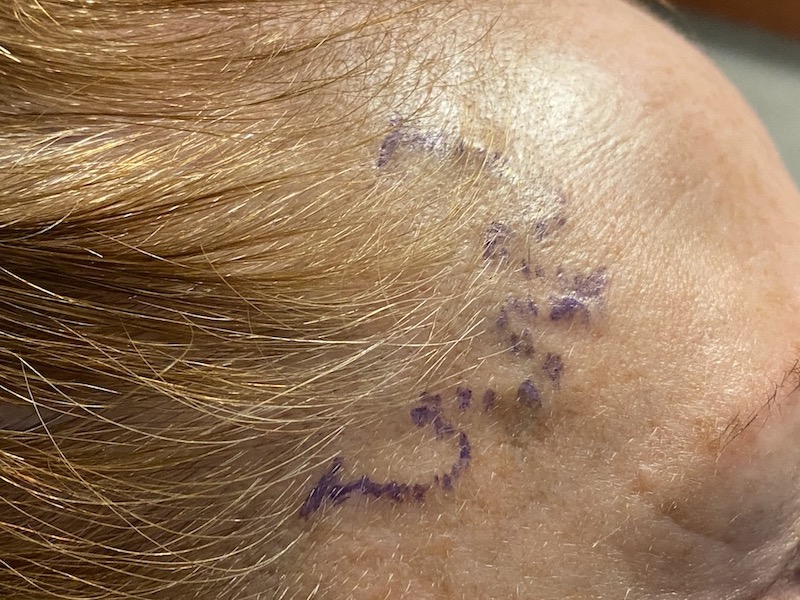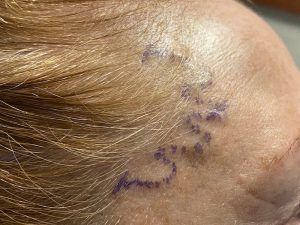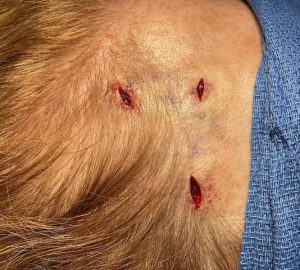Background: Prominent temporal arteries are very common in men. Everyone has seen some male (probably a lot more than just one) with the appearance of ‘worms’ on the sides of their forehead. While often referred to as veins that are arteries which is given away by their classic serpiginous pattern. (veins are more vertical and straighter) They are more common in men due to the thicker and more muscular arterial walls.
While far less common in women, prominent temporal arteries do occur in them. But they do have several features that make them slightly different than men. Their serpiginous course is the same but they are often a bit less prominent. While in men some temporal vessel prominence may be aesthetically acceptable this is rarely the case in women. Because of the much higher incidence of temporal arteritis and autoimmune diseases in women their presence may warrant a medical workup to rule out these disorders rather than just assume it is a pure aesthetic issue.
Case Study: This female desired to have her prominent temporal arteries reduced. The right side was more prominent than that of the left. She had been through a complete medical workup which was failed to find a medical basis for it.

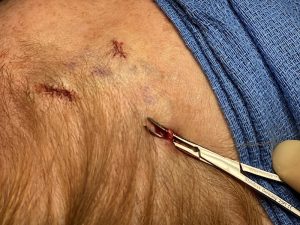
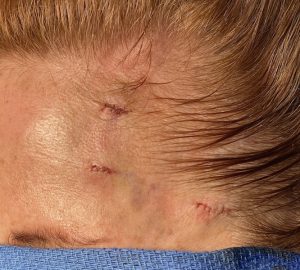
In ligations of the superficial temporal arteries a minimum of three points is always needed. This may be expanded to additional locations based on checking the vessel patterns with a doppler during the procedure. The key being you have to keep doing ligation points until any vessel signals are eliminated.
Case Highlights:
1) Prominent temporal arteries is far less common in women than men.
2) Regardless of gender multilevel ligations is the only effective method for reducing prominent temporal arteries.
3) Females provide an improved opportunity for more hidden incision locations.
Dr. Barry Eppley
Indianapolis, Indiana

